by W.S. Cranshaw 1 (1/19)
Quick Facts…
- Aphids are found on almost all types of plants and a few species can cause plant injury.
- Some aphid species can curl the new leaves of some types of plant.
- Feeding aphids excrete honeydew, a sticky fluid that can cause nuisance problems.
- Natural enemies of aphids include lady beetles, flower fly larvae, lacewing larvae, and parasitic wasps.
- Exposed aphids can be controlled by insecticides, insecticidal soaps and sometimes with a strong jet of water.
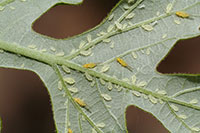
Figure 1: Aphids on the underside of an oak leaf. |
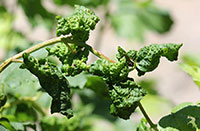
Figure 2: Leafcurling produced by aphids on snowball viburnum. |
Aphids are the most common insects found on trees, shrubs, and garden ornamental plants. Over 350 different aphid species occur in the state but most can feed on only a few species of plants. However, with so many kinds of aphids, few plants grown in Colorado do not support at least one aphid. Most species rarely injure plants or even attract attention, but a few aphid species do cause problems (Table 1).
Aphids feed by sucking sap from plants. When the number of aphids on a plant are very high for an extended period, their feeding can cause wilting and sometimes even dieback of shoots and buds. Some aphids can cause leaf curling when the insect infests emerging leaves.
Sometimes problems with aphids do not primarily involve plant injury but instead their production of sticky honeydew. Honeydew is the waste material excreted by aphids and certain other phloem-sucking insects (e.g., soft scales, whiteflies, some leafhoppers). It may cover leaves, branches, sidewalks and anything that lies beneath a infested plant material. Grayish sooty mold grows on the honeydew, further detracting from plant appearance. Ants, yellowjacket wasps, flies, and bees are usually attracted to plants that are covered with honeydew.
Table 1: Some common aphids associated with trees, shrubs and ornamentals in Colorado. Those marked with an * commonly cause leaf curling distortions in new growth.
| Scientific name(Common name) | Host plant |
| Acyrthosiphum pisum (pea aphid) | Sweet pea, other legumes |
| Aphis helianthi (sunflower aphid) | Red twig dogwood, yucca and many flowering plants in summer |
| Aphis nerii (yellow milkweed aphid) | Milkweeds (Asclepias) |
| Aphis spiraecola (spirea aphid) | Spirea |
| Aphis viburnicola (snowball aphid) | Snowball viburnum |
| *Brachycaudus helichrysi (leafcurl plum aphid) | American Plum |
| Caveriella aegopodii (willow-carrot aphid) | Various European willows |
| Chaitophorus populicola | Populus |
| Chaitophorus populifolii | Populus |
| Chaitophorus viminalis | Willow |
| Cindara spp. (giant conifer aphids) | Pines, juniper, spruce |
| *Cryptomyzus ribis (currant aphid) | Currant |
| *Dysaphis plantaginea (rosy apple aphid) | Apple |
| Dysaphis tulipae (tulip bulb aphid) | Dutch iris, tulip |
| Eriosoma lanigerum (woolly apple aphid) | Elm, apple, crabapple |
| *Eriosoma amiercanum (woolly elm aphid) | Elm, amelanchier/Serviceberry |
| Essigella spp. | Pines |
| Eulachnus spp. | Pines |
| *Hyadaphis tataricae (honeysuckle witches’ broom aphid) | Tatarian honeysuckle |
| Hyalopterus pruni (mealy plum aphid) | Prunus |
| Macrosiphum rosae (rose aphid) | Rose |
| Macrosiphum euphorbiae (potato aphid) | Rose, many flowers |
| Macrosiphum albifrons (lupine aphid) | Lupine |
| *Meliarhizophagous fraxinifolii (leafcurl ash aphid) | Green ash |
| Monellia caryae (American walnut aphid) | Walnut |
| Myzocallis tiliae (linden aphid) | Linden |
| Myzocallis alhambra (western dusky-winged oak aphid) | Bur oak |
| Myzocallis ulmifolii (elm leaf aphid) | Elm |
| *Myzus ceraki (black cherry aphid) | Tart Cherry |
| *Myzus persicae (green peach aphid) | Peach, apricot, other Prunus |
| Nasonovia aquilegiae (columbine aphid) | Columbine |
| Nearctaphis bakeri (shortbeaked clover aphid) | Hawthorn |
| Periphyllus lyropictus (Norway maple aphid) | Norway maple |
| Prociphilus fagi (woolly beech aphid) | Beech |
| Pterocomma bicolor | Populus |
| Pterocomma smithiae (black willow aphid) | Willow |
| Rhopalosiphum cerasifoliae (chokecherry aphid) | Chokecherry, pin cherry |
| Rhopalosiphum nymphaeae (water lily aphid) | Prunus, various aquatic plants |
| Thecabius lysimachiae (moneywort aphid) | Black poplar, moneywort (Lysimachia) |
| Tuberolachnus salignus (Giant willow aphid) | Willow |
| Uroleucon sp. | Many flowers |
Life History and Habits
Aphids are small insects that may be found on leaves, stems and sometimes branches of plants. They have an oval body form and a pair of pipe-like structures (cornicles) usually can be seen protruding from the back of the body. Colors are widely variable among the different aphid species – ranging from very pale yellow to dark, nearly black. Most have shades of green or orange and a few species are even bright red. Upon close inspection, many aphids can be seen to have intricate body patterning. All aphids are small, ranging from 1.5-5.0mm, with the larger species found on stems and branches.
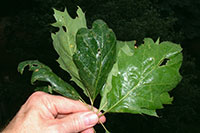
Figure 3: Honeydew produced by aphids covering oak leaves. Photograph courtesy of Jim Kalisch, University of Nebraska. |
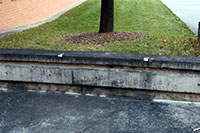
Figure 4: Sooty mold growing on a wall and walkway underneath a linden tree that is chronically infested with linden aphid. |
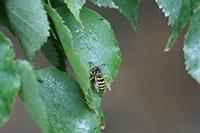
Figure 5: Yellowjacket wasp feeding on honeydew produced by linden aphid. |
Some aphids obscure their body by covering themselves with waxy threads. These are known as “woolly aphids.” The woolly apple aphid is a common woolly aphid that clusters on the limbs of apples and crabapples. Aphids that cluster within leaves that curl, such as the leafcurl ash aphid, are wax covered as are most aphids that live on plant roots. On conifers a related group of insects occur, the adelgids, which similarly cover themselves with waxy threads.
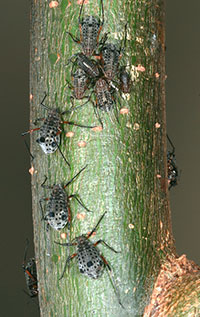
Figure 6: Giant willow aphids that develop on willow stems are the largest aphids found in Colorado. Photograph courtesy of Jim Kalisch, University of Nebraska. |
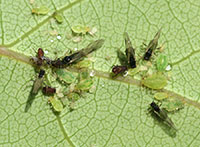
Figure 7: Colony of aphids on the leaves of willow. |
Colonies of aphids often consist of a mixture of winged and wingless forms. The great majority of aphids usually develop into the wingless form to remain and reproduce on the plant. More winged forms tend to be produced when colonies get overcrowded, plants decline in quality, or environmental cues favor dispersal to new plants.
Essentially all aphids, regardless of their form, are females. Males, if they do occur, are present only in late summer/early autumn, during the last outdoor generation. The normal habit of aphids is for a female to give live birth to a genetically identical daughter aphid through asexual reproduction (parthenogenesis). The newly born aphid can develop rapidly, typically becoming full-grown in about 10 to14 days. Adults usually can produce three to five young per day over the course of their lifetime, which may extend to about a month but is usually shortened by natural enemy activities.
There is a shift in the life cycle of aphids to handle the challenge of winter, when plants are not active and cold temperatures would be lethal. At the end of the summer, different forms of aphids are produced, including special sexual form males and females.After mating, these females can lay eggs, with they typically lay eggs in crevices around buds or on stems. This egg is the stage that the aphid normally survives winter during outdoor conditions in Colorado. Eggs hatch the following spring, shortly after bud break, and the normal life cycle resumes.
Some aphids have even more complicated life cycles that involve alternating among host plants. With these species, eggs are laid at the end of the growing season on a tree or shrub (winter host). The eggs hatch on this plant in the spring and the aphids have several generations on this plant. Later, all winged forms are produced and the leave the winter host and move to feed on a different kind of plant (summer host). The summer hosts of these plants include several garden plants and weeds. Some of the more common aphids that have host alternation in Colorado are listed in Table 2.
Table 2: Some common Colorado aphids that alternate between woody and herbaceous hosts.
| Aphid | Overwintering Host | Summer host |
| Black cherry aphid | Woolly elm aphid | Wild mustards |
| Currant aphid | Currant | Wild mustards |
| Green peach aphid | Peach, plum, apricot | Peppers, cabbage, potato, many garden plants |
| Leafcurl plum aphid | Plum | Various aster-family plants, clover, vinca, thistle |
| Mealy plum aphid | Plum | Cattail, reeds |
| Potato aphid | Rose | Potatoes, tomatoes and many other garden plants |
| Rosy apple aphid | Apple, pear, mountain-ash | Plantain |
| Shortbeaked clover aphid | Hawthorn | Legumes |
| Sunflower aphid | Dogwood | Sunflower, yucca, parsley, cilantro, pigweed, many other herbaceous plants |
| Thecabius lysimachiae | Black poplar | Moneywort (Lysimachia) |
| Water lily aphid | Plum, other Prunus | Water lily and many other aquatic plants |
| Willow-carrot aphid | Willow | Carrot, parsley, dill |
| Woolly elm aphid | American elm | Serviceberry (roots) |
Management
Natural Enemies
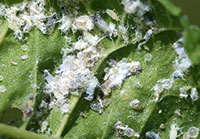
Figure 8: Leafcurl ash aphids, a type of woolly aphid. These aphids curl the leaves of green ash. |
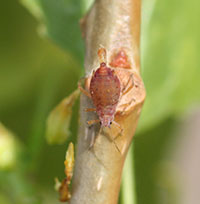
Figure 9: Aphid on cottonwood giving live birth to a daughter aphid. |
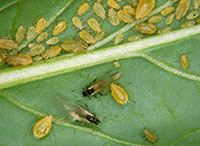
Figure 10: Winged and wingless forms of the green peach aphid. |
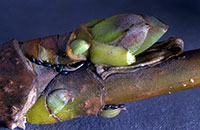
Figure 11. Eggs of the Norway maple aphid tucked around the base of buds. Photograph courtesy of Ken Gray Collection, Oregon State University. |
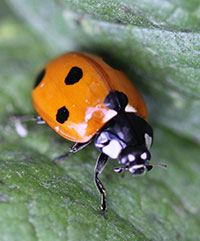 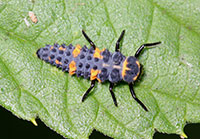
Figure 12a-b: Adult (a) and larva (b) of a lady beetle. |
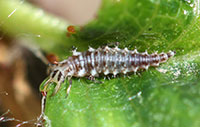 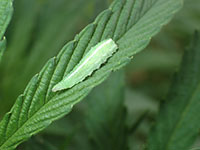
Figure 13a-b: Larvae of a green lacewing (as) and a flower fly (b). |
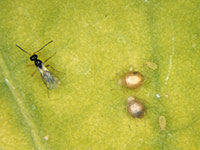
Figure 14: Adult of a parasitoid wasp next to two aphid mummies. |
Aphids are quite defenseless and there are numerous insects that feed on them (Fact sheet 5.550, Beneficial Insects and Other Arthropods). The best known of these natural enemies are lady beetles, with lady beetle larvae being particularly voracious predators of aphids. Other common aphid predators include the larvae of green lacewings and flower (syrphid) flies.
Several species of minute stingless wasps parasitize aphids. These parasitoid wasps insert their eggs into the body of the aphid and the larvae consume it internally. Aphids that have been killed by parasitoid wasps (“aphid mummies”) have a conspicuous appearance, becoming bloated, turning light brown or black and sticking to the plant.
Physical and Cultural Controls
On shrubs and garden plants, aphids can sometimes be managed by simply washing them off of plants with a forceful jet of water. Hosing plants may lethally injure aphids and very few surviving aphids that are knocked to the ground can successfully find their way back onto their host plant.
Some flowers that are perennial, but dieback to the ground in fall, have problems with aphids in the spring. Columbine, lupines and perennial asters are examples. With these plants the eggs of the aphids are laid on the leaves and stems in fall. The eggs hatch in spring and if new growth has emerged at that time some of the newly hatched aphids can make it to the growing plant. This can be prevented by removing the old top growth that contains the eggs before plants emerge in spring. This plant material can then be safely composted or piled elsewhere as any aphids that hatch from the eggs will only be able to move very short distances (inches) before dying.
Chemical Controls
Where high numbers of aphids regularly occur and injure plants or outbreaks are not sufficiently controlled by biological controls, insecticides can be used to manage aphids. These are used in several ways.
Dormant Season Oil Applications. Horticultural oils (Fact sheet 5.569, Insect Control: Horticultural Oils) have a special place in aphid control, to kill egg stages during the dormant season. Horticultural oils act largely by smothering insects their use for aphid control would require that they cover the eggs, which are the overwintering stage on some kinds of aphids on trees and shrubs. They would be applied as sprays sometime before bud break, during the dormant season.
Most aphids on fruit trees, aspen/poplars, willows, poplars, pines, rose, lindens, maples, oaks, hawthorn and viburnum survive winter as eggs on the plant and can be controlled with horticultural oils. Other aphids, such as the leafcurling aphids on ash, do not survive winter in this stage and cannot be controlled with horticultural oils.
Non-persistent Contact Insecticide Sprays. Insecticidal soaps and pyrethrins are two commonly available and popular insecticides that can be used to control aphids. Neither of these persists for long (minutes to hours) on the foliage. Only insects that are covered with sprays during application can be killed with these types of products. Neither will move systemically in the plant and they cannot control aphids that have curled leaves and cannot be reached with sprays.
A main advantage of both insecticidal soaps and pyrethrins is that they are selective in their effects, posing minimal hazard to beneficial insects (e.g. pollinators, natural enemies of pests) and have very low toxicity to mammals and birds.
Persistent Contact Insecticide Sprays. Many of the insecticides sold at retail stores will persist for awhile in their ability to kill aphids – and other insects. Some may be able to continue to kill insects for several hours, some for several days.
Most of these types of insecticides found on for sale to control aphids are some type of pyrethroid insecticide. (Pyrethroids are synthetic derivatives of the natural product pyrethrins, which is extracted from flowers of the pyrethrum daisy/Dalmatian daisy.) Pyrethroids can be identified by looking at the active ingredients. Those that end in “thrin” are some pyrethroid: bifenthrin, cypermethrin, cyhalothrin, cyfluthrin, permethrin. None of these move systemically in the plant so they are not effective for aphids present in curled leaves. Malathion is another insecticide that can kill aphids on contact, although its availability is diminishing.
Because of their persistence these insecticides may give better initial control of aphids than a non-persistent insecticide. However, they can have serious effects on the natural enemies of aphids, which may diminish longer term control. Persistent insecticides cannot be applied to plants that are in bloom and being visited by bees.
Systemic Insecticide Sprays. A few types of insecticides have the ability to move into the plant and move systemically. Because of this mobility these systemic insecticides can provide better plant coverage and often provide better control of aphids than do non-systemic insecticides. Systemic insecticides are also able to kill aphids that are protected within a leaf they have curled. Acetamiprid and imidacloprid are the active ingredients of systemic insecticides gardeners can purchase and use as spray. Both may continue to kill insects for a couple of days to a couple of weeks after application.
Sprays of systemic insecticides come with the same limitations as the non-systemic persistent insecticides mentioned above – they may kill natural enemies of aphids and pose risks to pollinators if applied to plants in bloom.
Soil-Applied Systemic Insecticides. The systemic insecticide imidacloprid can be applied to the soil where it may be picked up by plant roots then moved through the plant, concentrating in the newer leaves. This insecticide is widely available at retail and sold under several different trade names. In some formulations used on trees it is combined with a second systemic insecticide, chlothianidan.
These insecticides are normally mixed with water, then poured around the base of the plant. If mulch is present over the treated area, that must be removed before application, but can then be replaced. After application the soil needs to be kept a bit moist to allow the insecticide to move to and be absorbed by roots. There will be some delay between the time of application and when insects will be killed by a soil application of imidacloprid. Normally this will take a couple of weeks if conditions are suitable for root uptake (warm temperatures, moist soil).
Once the insecticide has moved within the plant these treatments will usually be able to kill aphids – and other susceptible insects – for several weeks, perhaps a couple of months. This long persistence can provide very good aphid control. However, it also can increase potential to harm beneficial insects. At particular risk are insects that feed on pollen and nectar, such as bees and some insect natural enemies, since imidacloprid can occur in pollen and nectar. To prevent injury to pollinators, soil-applied systemic insecticides should not be applied to plants that are flowering or soon will be flowering.
1Colorado State University Extension entomologist and professor, bioagricultural sciences and pest management. 4/96. Revised 1/19.
Colorado State University, U.S. Department of Agriculture, and Colorado counties cooperating. Extension programs are available to all without discrimination. No endorsement of products mentioned is intended nor is criticism implied of products not mentioned.
Go to top of this page.





